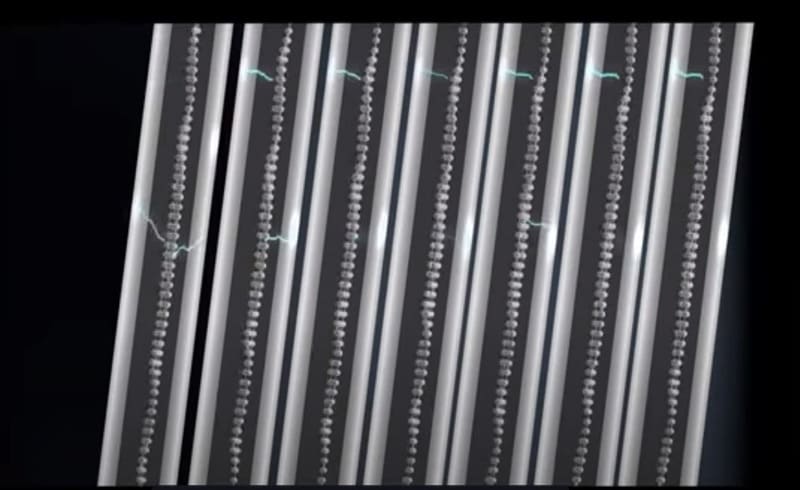Neutrinos and non-visible radiation are finally usable
When I came across the new and innovative approach of neutrinovoltaic years ago, I quickly realized what a global dimension this technology will have when it is used on a larger industrial scale. In 2023, it is clear: what researchers, scientists and developers have created here can no longer be stopped. Large plants are already being built to integrate neutrinovoltaic as a basic technology in a wide variety of applications and products so that everyone can use it.
What is neutrinovoltaic?
Neutrinovoltaic is the brand name for a patented and protected basic technology. It is about harnessing and converting invisible radiation, including neutrino particles, into usable energy. At the beginning of the visionary implementation by Holger Thorsten Schubart, the focus was on neutrinos. In the course of the past years, with the participation of many renowned scientists around the world, it became increasingly clear that the entire background radiation (the invisible radiation spectrum) could be considered as an inexhaustible source of energy.
While photovoltaics has only about 5 % (= visible range: 400 to 800 nm) of the entire radiation spectrum available as an energy source, neutrinovoltaic accesses the remaining 95 % (= invisible range). As always, it is all about the effectiveness of energy conversion – both in photovoltaics and in neutrinovoltaic.
These inexhaustible energy sources have always been there. Day and night, 365 days a year and everywhere on earth. Even in the earth, because neutrinos penetrate everything.

What was the turning point in neutrinophotovoltaic research?
The vision of using radiant energy became very concrete in 2008 with the founding of the German-American companies Neutrino Inc. and Neutrino Deutschland GmbH, both of which belong to the Neutrino Energy Group. However, it was ridiculed rather than taken seriously, as the belief prevailed that neutrinos had no mass and therefore no energy could be converted.
In 2015, the Nobel Prize in Physics was awarded to Takaaki Kajita (Japan) and Arthur B. McDonald (Canada) for independently demonstrating that neutrinos have mass. This created a new reality from the vision of Holger Thorsten Schubart. With this proof, the attitude of the professional world towards neutrino research changed greatly and renowned scientists and developers were brought on board to develop a new basic technology for industrial use.
Every second, inexhaustible quantities of energy reach
every square metre of the earth’s surface
Energy conversion / energy generation is not just about neutrinos, but about using the entire non-visible range of the radiation spectrum!
Some figures to better understand the concepts of inexhaustible energy source:
The earth receives most of its required energy from the sun. Every square metre of the earth’s surface receives an average of about 342 watts of solar energy every hour over the course of a year. This results in a huge amount of energy – about 44 quadrillion (4.4 x 10 to the 16th power) watts. A single comparatively large power station can generate about 1 billion (1 x 10 to the 9th power) watts of electrical power. So to match the amount of energy generated by the sun, 44 million such power plants would be needed.
The flux of neutral neutrinos is 60 billion particles per second per square centimetre of the earth’s surface!/strong>
Only a fraction of the total neutrino flux hits the graphene atoms in the meta-material and thus leads to an interaction. There is a transfer (partial or complete) of the kinetic energy of the neutrinos to the graphene atoms and 3-dimensional lattice structure, which increases the frequency and amplitude of the oscillations.

The newly developed meta-material could be designed very efficiently with the help of powerful quantum computers and artificial intelligence (AI). While quantum computers can simulate an unimaginable number of material combinations, types of doping, properties and geometries, AI is used to process large amounts of data in order to achieve the desired result more quickly.
The result is a completely new type of material with a hexagonal graphene lattice structure. This extremely thin and layerable material is able to convert the oscillation energy of the neutrino / radiation fields into electric current with the help of doped silicon.
The stronger the external energy fields and thermal fields act on the graphene lattice structure (alternation of neighbouring regions between concave and convex curvatures), the stronger the so-called “graphene waves” become in their amplitude and frequency and thus the converted usable energy.

Modern high-resolution scanning electron microscopes can image the “graphene waves”. Graphene enables electrical current at very high density, while the mobility of charge carriers is record-breaking. Each graphene atom is bound to three other carbon atoms – on a two-dimensional plane, mind you, so that one electron is always freely available for electron conduction in the “third dimension”.
This is the key to using the movement of 2D materials as a source of inexhaustible energy. Tandem oscillations cause waves in the graphene layer, allowing energy to be extracted from the surrounding space using state-of-the-art nanotechnology.
The use of this inexhaustible and decentralized energy source is gaining momentum. Not every new cooperation can be reported on, as non-disclosure agreements (NDA) exist and listed companies have multiple obligations regarding the publication of relevant data, cooperation and ad-hoc announcements. We can eagerly await official news from Neutrino Energy Group in the coming weeks and months.
Part 2 reports on specific products, performance data, current projects and future prospects


